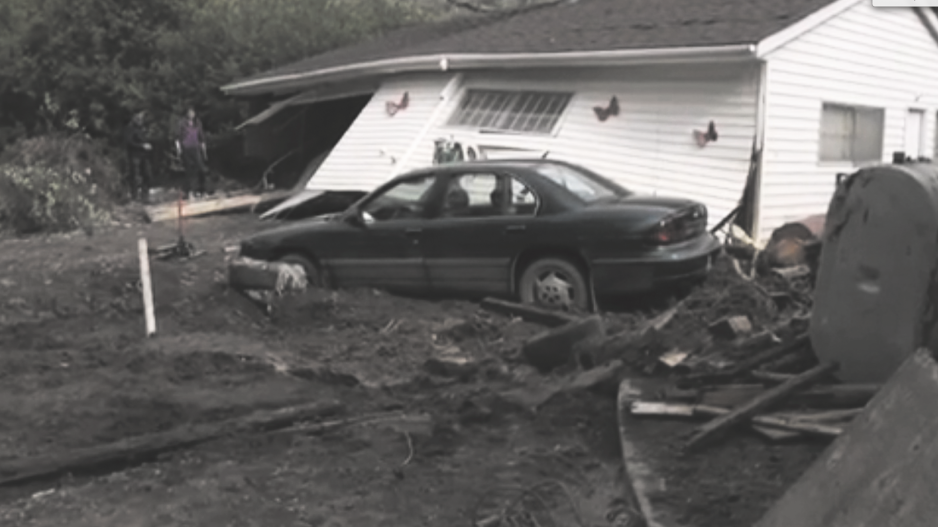They may not have been as dramatic as the Alberta flood of 2013, but intense storms experienced by several British Columbia towns this year show just how costly even a minor weather event can be.
“[The storm] lasted 45 minutes to an hour and in municipal infrastructure cost between $2 million and $3 million,” said Cache Creek Mayor John Ranta of a rainstorm that ripped through his town in May and caused flash flooding that took out roads and destroyed several houses.
“It certainly stretched our resources to the maximum,” said Kevin Cormack, city manager for the City of Nelson, of a 100-mile-an-hour windstorm that dropped trees through house roofs and power lines in late June. “It was a full week of working 14 hours a day to fully restore power to people’s homes.”
As global temperatures rise, scientists expect big, destructive storms like hurricanes and typhoons to become more frequent and intense.
The weather B.C. will face is expected to be less dramatic, but cities in the Lower Mainland will be at greater risk of flooding from heavier rains combined with sea-level rise. A combination of warming air, dry ground and the way humans have changed natural landscapes will also put some areas at greater risk of flash floods, said Kai Chan, a scientist at the University of British Columbia’s Institute for Resources, Environment and Sustainability.
“In between the rain events, the warmer air holding more moisture means it also sucks more water out of the soil,” Chan said. “So what that means is that in a long, dry spell as we have had many summers and this last six months in B.C., the soil is getting very dry. It acts a lot more like concrete. Water’s going to fall off that surface much more rapidly.”
Warming air can also fuel high winds.
“When hot air rises from the surface of the planet, the air around it rushes in to fill that space. … If there’s more heat in general it will provide more power to the wind,” Chan said.

A brief but destructive 100-mile-an-hour windstorm in Nelson cost the municipally-owned hydro company upwards of $800,000 in extra costs
The municipality of Cache Creek has been able to secure provincial funds through Emergency Management BC. Residents have been able to apply for up to $300,000 for damage that was not covered by insurance, which generally doesn’t cover overland flooding.
While the province covered all of the cost of the immediate response, funds for rebuilding municipal infrastructure cover only 80%. The remaining cost to the town of 1,200, which Ranta estimates at between $400,000 and $600,000, exceeds its annual tax revenue.
Nelson’s municipally owned hydro company spent between $800,000 and $900,000 on labour and repair costs, according to a report in the Nelson Star.
Heavier rain causing flooding has become more common in the area over the past four years, said Cormack.
Nelson Coun. Ann Purcell said the municipality is ahead of the game when it comes to upgrading its aging sewer and water system, which involves installing bigger pipes to handle larger volumes of water.
“It’s incredibly expensive and not sexy at all,” Purcell said. “Nobody gets excited about their road being torn up, but they get really excited about their basements not flooding.”
Canadian muncipalities are already struggling with an infrastructure deficit, and adapting to climate change is only going to add to that deficiency unless new funding models are put in place, Simon Fraser University researchers wrote in a report on how to pay for urban infrastructure adaptation published June 17.
According to the report, most larger cities are actively planning for climate change adaptation. But small towns are much less likely to have started planning.
Some options for funding adaptation projects include transfers from provincial and federal governments that incentivize climate change adaptation; green bonds; and private sector investment.
@jenstden




